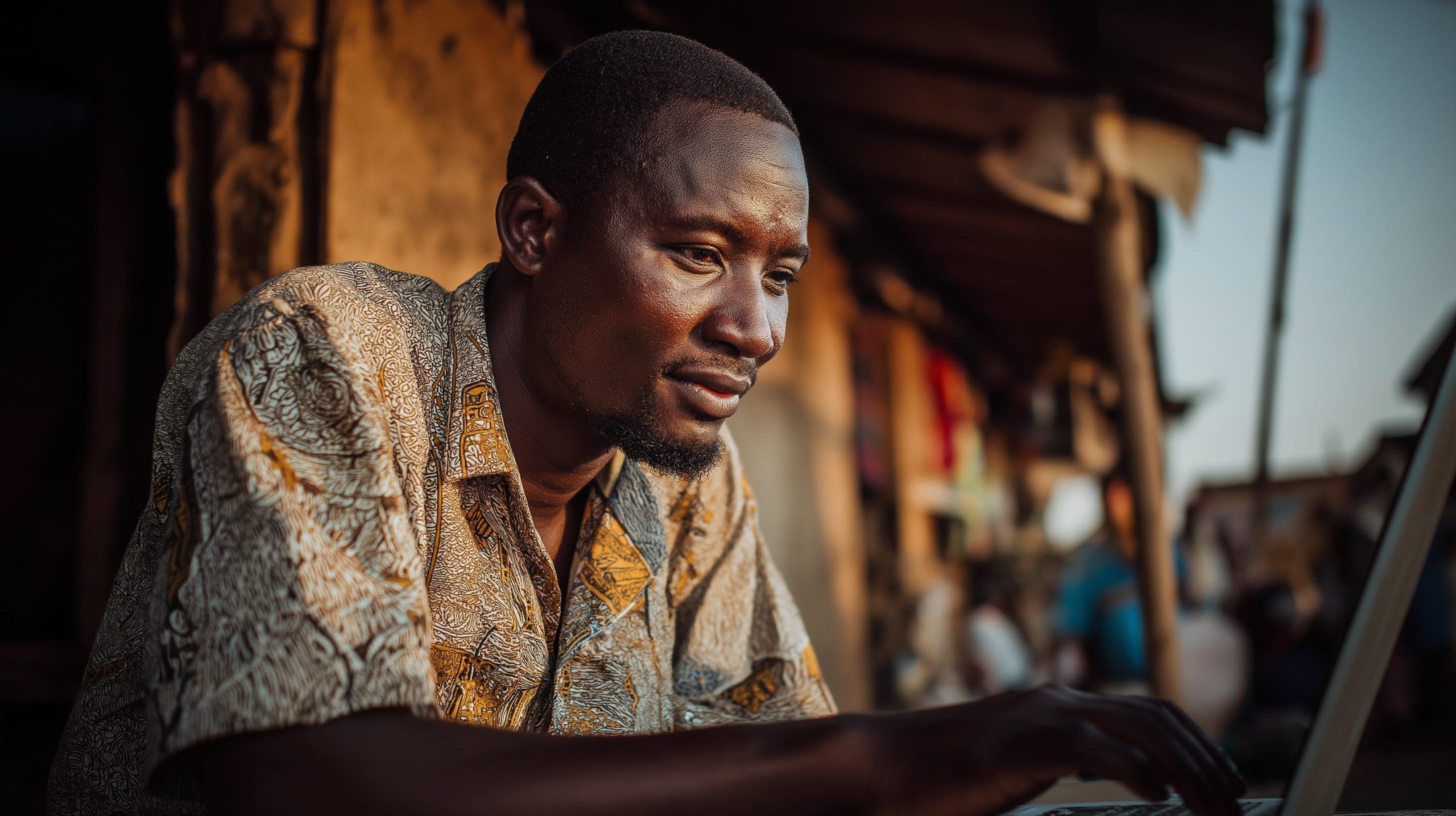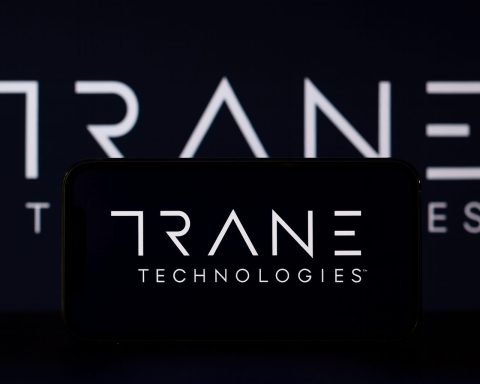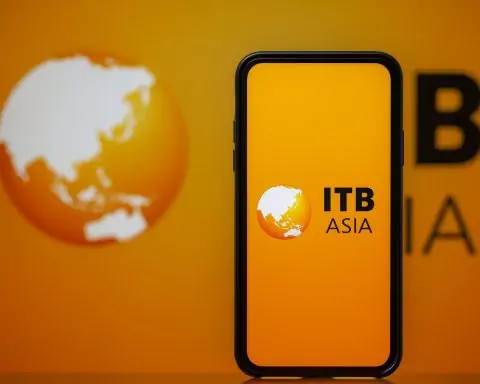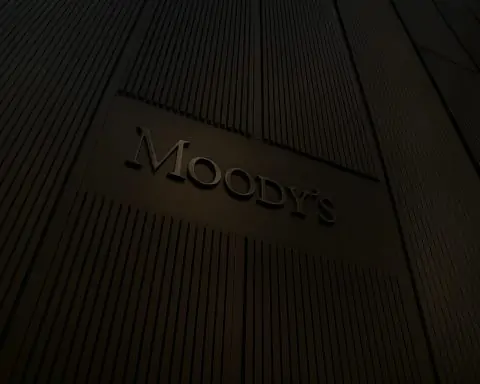- The national fiber-optic backbone, about 1,300 km long, was completed in 2018 by Huawei to connect major cities and border links in Malawi.
- In July 2023, ESCOM linked Malawi to Tanzania’s national broadband backbone, a move expected to lower international bandwidth costs and extend connectivity to rural areas.
- In 2023, Liquid Intelligent Technologies launched a new fiber route between Zambia and Malawi to provide faster, more direct access to backbones and data centers.
- As of early 2025, Malawi had 13.2 million active mobile cellular connections, representing about 60.3% of the population, with more than 90% on 3G or 4G networks.
- Malcel, licensed in 2022 as Malawi’s third mobile operator, is planned to launch to expand coverage and foster price competition, with an estimated investment of around $280 million.
- Fixed broadband remains extremely rare, with less than 1 fixed broadband subscription per 100 people in 2023, and the copper network having been decommissioned due to theft and maintenance issues.
- Public Wi-Fi initiatives include over 100 free hotspots nationwide, and the Malawi Research and Education Network (MAREN) delivers free or subsidized campus Wi‑Fi at 81 higher-learning institutions benefiting over 83,000 students.
- The internet penetration rate was about 18% in 2023, about 3.95 million internet users by January 2025, with urban areas at 40.7% and rural areas at 13.5% as of 2023, and roughly 82% of the population offline in 2025.
- Starlink entered Malawi after a license granted in October 2022, with the service going live by mid-2023 and offering speeds of 50–150 Mbps, but hardware costs around MWK 577,726 and monthly fees about MWK 52,000, creating affordability barriers.
- Malawi’s Digital Malawi Strategy and Phase II, announced in late 2024 with a $150 million package, aim to connect 2,500 more public institutions, expand digital skills, and update ICT regulations over the next five years.
Overall Internet Infrastructure in Malawi
Malawi’s internet infrastructure remains underdeveloped but has seen gradual improvements in recent years. Fiber-Optic Backbone: As a landlocked country, Malawi relies on fiber links through neighboring countries to connect to submarine cables. It is connected via Mozambique, Zambia, Tanzania, and South Africa through the SEACOM and EASSy cables [1]. A national fiber-optic backbone (approximately 1,300 km) was completed in 2018 by Huawei to improve domestic connectivity [2]. In July 2023, the state power utility (ESCOM) agreed to link Malawi to Tanzania’s national broadband backbone, a move expected to lower international bandwidth costs and extend connectivity to rural areas [3]. The same year, Liquid Intelligent Technologies launched a new fiber route between Zambia and Malawi to provide faster, more direct access to internet backbones and data centers [4]. These backbone initiatives aim to reduce Malawi’s historically high transit costs and improve network reliability.
Mobile Networks: Given the limited fixed infrastructure, mobile networks carry the bulk of internet traffic in Malawi. The country’s two dominant mobile operators – Airtel Malawi (a Bharti Airtel subsidiary) and Telekom Networks Malawi (TNM) – provide nationwide 2G/3G coverage and have invested in 4G LTE to improve data services [5]. As of early 2025, there were 13.2 million mobile cellular connections active in Malawi, equivalent to about 60.3% of the population [6]. (Many individuals own multiple SIMs, so unique mobile users are fewer.) Over 90% of these connections are on 3G or 4G networks, meaning most subscribers have devices capable of mobile broadband [7]. TNM began 5G trials in partnership with Huawei, indicating a push toward next-generation mobile services, though 5G is not yet commercially available [8]. In the absence of broad competition (only two operators currently active), the mobile market has room for growth – a third operator (Malcel) was licensed in 2022 and is expected to launch services to expand coverage and compete on pricing [9]. Mobile infrastructure upgrades and new entrants are crucial, as mobile broadband is the primary mode of internet access for Malawians.
Fixed-Line and Wi-Fi Services: Traditional fixed-line telephone and broadband infrastructure in Malawi is minimal. The former incumbent Malawi Telecommunications Limited (MTL) has decommissioned most of its copper telephone network due to years of theft and maintenance issues, leaving almost all fixed-line connectivity to be delivered via VoIP over broadband links [10]. As a result, fixed broadband subscriptions are extremely rare – less than 1 per 100 people as of 2023 [11]. A small number of Internet Service Providers (ISPs) offer fixed wireless and fiber connections in urban centers. Companies like Skyband and Globe Internet provide services such as WiMAX, Wi-Fi hotspots, VSAT, and fiber to businesses and affluent residential customers. MTL and other providers lease fiber backbone capacity to these ISPs [12]. There are officially 24–50 licensed ISPs (figures vary by source) in Malawi [13] [14], but most are small operators serving niche markets or acting as resellers.
Public Wi-Fi: To bridge access gaps, the government and partners have deployed public Wi-Fi in key areas. Over 100 free Wi-Fi hotspots have been established at universities, schools, hospitals, markets, libraries, airports and other public locations [15]. This initiative, accelerated during the COVID-19 pandemic and recent natural disasters, allows students and citizens to get online without personal data costs. The Malawi Research and Education Network (MAREN) also provides free or subsidized campus-wide Wi-Fi at 81 higher-learning institutions, benefiting over 83,000 tertiary students [16] [17]. These Wi-Fi networks, along with community telecenters and cybercafés, form an important part of the internet ecosystem, especially for those who cannot afford mobile data.
Internet Penetration and User Statistics
Internet penetration in Malawi is among the lowest in the world, though it has been growing gradually. As of 2023, roughly 18% of the population uses the internet [18]. This corresponds to about 3.95 million individual internet users in early 2025 out of an estimated 21.9 million population [19] [20]. In other words, over four out of five Malawians remain offline. (For context, the African average internet penetration is around 43% as of 2022.) Even by early 2024, optimistic estimates put Malawi’s internet penetration at no more than ~28% [21], highlighting the significant digital divide. The table below summarizes key ICT usage statistics:
| Key Indicator (Year) | Malawi |
|---|---|
| Population (Jan 2025) | 21.9 million [22] |
| Internet users (Jan 2025) | 3.95 million (18.0% penetration) [23] |
| Mobile connections (Jan 2025) | 13.2 million (60.3% of population) [24] |
| – of which broadband-capable | ~90% on 3G/4G networks [25] |
| Mobile broadband subscriptions (2023) | ~40.2 per 100 people [26] |
| Fixed broadband subscriptions (2023) | < 1 per 100 people [27] |
| Active social media users (Jan 2025) | 1.80 million (8.2% of population) [28] |
| Urban households with internet (2023) | 40.7% [29] |
| Rural households with internet (2023) | 13.5% [30] |
| Median mobile download speed (May 2024) | 20.3 Mbps [31] |
| Median fixed download speed (May 2024) | 19.7 Mbps [32] |
Growth trends: Malawi has seen modest growth in internet uptake. Between January 2024 and January 2025, the number of internet users increased by only about 100,000 (a 2.6% rise) [33]. Given rapid population growth, the overall penetration rate stagnated around 18%. Mobile phone ownership is also relatively low – only about 57–60% of Malawians have a mobile phone or SIM connection, which constrains internet user growth [34] [35]. By comparison, many African countries have mobile penetration exceeding 80-90%. The slow growth is attributed to factors discussed later (cost, coverage, and socioeconomic barriers).
It’s worth noting that different surveys report varying figures for internet use due to methodological differences. For instance, Malawi’s National Statistical Office (NSO) found 18% of individuals used the internet in 2023 [36], whereas one international report estimated 27.7% by early 2024 [37]. Regardless of the exact figure, all sources agree that the majority of Malawians – over 16 to 18 million people – are still offline [38]. This underscores the challenge ahead for digital inclusion.
Another noteworthy trend is the rise in social media and mobile internet usage among those who are online. Social media users (mostly on Facebook and WhatsApp) account for about 8% of the population [39], and virtually all internet users in Malawi get online via mobile devices. The concept of “internet = Facebook” holds true for many first-time users in Malawi, as affordable social bundles introduced by operators have made platforms like Facebook accessible even to low-income users. Still, overall usage remains limited by access and cost constraints.
Mobile Internet vs. Fixed-Line Access
Mobile Internet Dominance: Internet access in Malawi is overwhelmingly mobile-centric. Mobile broadband (via smartphones or USB modems) is the primary means by which people get online. In 2023, there were about 40 mobile broadband subscriptions per 100 people in Malawi, whereas fixed broadband subscriptions were effectively under 1 per 100 people [40]. This stark contrast means that if a Malawian has internet access, it is almost certainly through a mobile network. The mobile networks’ coverage extends to most populated areas for basic voice/2G services, though high-speed 3G/4G coverage is mainly concentrated in urban and along major corridors. As of early 2025, about 90% of mobile connections in Malawi are on 3G or 4G plans [41], indicating that a sizable share of mobile users have devices and SIMs capable of internet access (even if not all actively use data due to cost). The advent of cheaper Android smartphones and the operators’ expansion of 4G (LTE) services to secondary cities have gradually improved mobile internet availability.
Fixed-Line Broadband: In contrast, fixed-line internet is nearly non-existent for the average consumer. The legacy copper telephone network has largely collapsed – MTL (the fixed telco) shuttered most of its copper exchanges due to rampant cable theft and high maintenance costs [42]. As a result, traditional DSL services are very limited. MTL and a few private operators instead focus on fiber-to-the-premises (FTTP) in select high-density areas and fixed-wireless broadband (using WiMAX, Wi-Fi, or microwave links) for corporate clients, NGOs, and wealthier households. Companies like Skyband have deployed WiMAX and maintain an MPLS network to deliver broadband in major cities [43]. However, these fixed broadband offerings are expensive and serve only a tiny fraction of the market. Even large organizations often rely on mobile network solutions (like 4G routers) if they are outside the limited fiber footprint.
Because of this dynamic, mobile vs. fixed usage is not so much a competition as it is a stopgap: mobile networks fill the connectivity void left by the lack of fixed infrastructure. The small number of fixed broadband subscribers are mostly institutions, offices, and a handful of urban homes. According to the ITU, Malawi’s fixed broadband penetration was 0.3 subscriptions per 100 people in 2021 (virtually zero), while mobile broadband was ~34 per 100 that year and rising [44]. Fixed services are also hampered by Malawi’s chronic power outages – without expensive battery or generator backups, fixed broadband equipment cannot deliver reliable service in many areas (power reliability is discussed later).
Wi-Fi and Community Networks: Aside from mobile and fixed-line distinctions, Wi-Fi plays a role through public access points. As noted, there are government-sponsored free Wi-Fi hotspots in dozens of locations [45]. In addition, some local entrepreneurs run internet cafés or hotspots where people can pay small fees to get online via Wi-Fi. The Universal Service Fund (USF) is supporting community-based networks as well; in 2024 MACRA announced the “Yathu Yathu Data” initiative to create community broadband cooperatives in remote rural areas using subsidized infrastructure [46]. These community networks will likely use a mix of technologies (Wi-Fi, wireless relays, etc.) to extend internet access to villages that mobile operators do not cover or where service is too expensive. While such initiatives are nascent, they represent innovative approaches to expanding fixed-wireless access beyond the main urban centers.
In summary, Malawi’s internet landscape today is one where mobile broadband is essentially the internet for the vast majority, with fixed and Wi-Fi solutions playing a limited complementary role for specific user groups. Any improvements in national connectivity are therefore heavily tied to improving mobile network reach, capacity, and affordability.
Key Providers and Available Technologies
Malawi’s telecom sector includes a mix of mobile operators, ISPs, and backbone providers, though the market is relatively concentrated:
- Mobile Network Operators (MNOs): The two main MNOs are Airtel Malawi and Telekom Networks Malawi (TNM). Together they account for virtually all mobile subscriptions and by extension the vast majority of internet connections. Airtel, part of the pan-African Airtel group, tends to lead in subscriber market share, while TNM is a locally-founded operator partly owned by Malawi’s Press Corporation. Both offer 2G, 3G, and 4G LTE services, mobile money, and other value-added services. They cover all 28 districts, though quality of service is higher in cities. A third operator, Malcel, was licensed in 2022 and has announced plans to invest ~$280 million to roll out a new network and a mobile money platform [47]. If Malcel succeeds in launching (expected in 2023–2024 timeframe), it would be Malawi’s first new mobile entrant in over a decade, potentially improving competition and extending coverage to underserved areas. (Previous attempts at a third mobile operator, like G-Mobile and Celcom, failed to launch or sustain services.)
- Fixed and Internet Service Providers: The backbone of Malawi’s internet is largely run by Malawi Telecommunications Limited (MTL). MTL operates the national fiber backbone and wholesale transmission network, leasing capacity to ISPs and mobile operators [48]. Once fully state-owned, MTL was privatized in 2005 (the government retains a 20% stake) [49]. On the retail side, there are a few notable ISPs: Skyband, Globe Internet, Malawi Net, Broadcom, and others, often organized under the Malawi Internet Service Providers Association. These ISPs typically provide dedicated broadband to businesses via fiber or fixed-wireless (including point-to-point radio and older WiMAX networks). Access Communications (ACL) is another provider that offers wireless broadband and is known for an LTE-based fixed service in Lilongwe and Blantyre. The state-owned ESCOM (power company) and Malawi SDNP (an academic network) also hold ISP licenses and own fiber infrastructure, making them unique players that primarily wholesale capacity to others [50]. In total, there were 24 licensed ISPs as of 2022 [51], and BuddeComm estimates around 50 ISP licenses by 2025 (though many are inactive) [52]. The relatively high number of licensed ISPs suggests a liberalized market, but the majority are small with limited customer bases.
- Technology and Services: On the mobile side, both major operators have deployed 4G LTE in major urban areas and along highways, while relying on 3G (HSPA) in secondary towns and 2G (EDGE) in rural zones for basic connectivity. 5G is in trial phase (with TNM testing equipment) but not yet commercially rolled out [53]. On the fixed side, fiber-optic service is available on a limited basis (primarily to enterprises or high-end residential compounds in cities). DSL is practically defunct due to the copper network issues. Cable internet does not exist (no cable TV infrastructure of note). Instead, Fixed Wireless Access is common for broadband – ISPs use technologies like WiMAX, Wi-Fi mesh, or 4G/5G routers to deliver last-mile connectivity. VSAT (satellite) is used by some remote clients (e.g., NGOs or tourist lodges) and as backup connectivity for banks and offices; historically, VSAT was crucial for Malawi’s connectivity before fiber links were established, but it remains expensive. Recently, Low Earth Orbit (LEO) satellite services (discussed below) have entered the market as a new technology option. Lastly, public Wi-Fi and community networks (discussed earlier) are becoming part of the mix, leveraging unlicensed spectrum to extend internet access in localized areas.
In summary, the provider landscape is dominated by two mobile carriers, with a handful of ISPs and state entities managing the underlying infrastructure. The technology mix is skewed towards wireless solutions – from mobile LTE to fixed wireless and satellite – with fiber playing a supporting role in core and metro networks. This mix is evolving as new investments come in (e.g., fiber expansions, 5G trials, new satellite options), which could diversify how Malawians get online in the coming years.
Internet Affordability and the Urban–Rural Divide
High Costs of Data: One of the biggest challenges in Malawi is the affordability of internet services. Data prices have historically been among the highest in Africa when compared to income levels [54]. As of 2024, 1 GB of mobile data can cost on the order of a few US dollars – for example, Airtel and TNM both offered a 4 GB monthly bundle for MWK 6,000 (about US$3.50) [55]. While $3.50 may seem low by global standards, Malawi’s minimum monthly wage is only around MWK 50,000 (~$29) [56]. This means even a modest data package can consume over 10% of a low-income worker’s earnings, and many Malawians survive on far less than the formal minimum wage. For the majority who live in poverty, regular internet use is simply unaffordable. Consequently, many users purchase the smallest bundles (daily or weekly packs of a few MBs) or rely on zero-rated services and public Wi-Fi rather than always-on data.
Efforts to Reduce Prices: The government and regulator have recognized data cost as a barrier and taken steps to intervene. In late 2020, authorities struck an agreement with the mobile operators to slash data bundle prices by an average of 80% [57]. Following continued public outcry, the regulator (MACRA) again enforced roughly a 33% reduction in data costs in mid-2021 [58]. These were significant regulatory actions that brought Malawi’s data prices down from prohibitively high levels. However, even after these cuts, data is still relatively expensive due to low incomes and heavy taxation. The government in 2021 announced plans to remove certain taxes on ICT services: specifically, to phase out the 10% excise duty on mobile internet data and SMS, and the 3.5% levy that MACRA collected on telecom operators’ turnover [59]. Such tax removals were projected to reduce device costs by ~22% and further cut data prices over a couple of years [60]. In practice, progress has been mixed – as of 2024, consumers are still paying 17.5% VAT on mobile phones, 16.5% VAT on internet services, plus the 10% excise tax on data/SMS in many cases [61]. These taxes contribute to high retail prices. There is ongoing lobbying by consumer groups and business associations to remove or reduce ICT taxes [62], and MACRA has undertaken a review of the tax structure with support from the World Bank [63]. Reducing fiscal burdens on both providers and users is seen as key to improving affordability.
Device affordability is another side of the coin. Many Malawians cannot afford an internet-capable device (smartphone or computer). The government noted that only 51% of the population owned any sort of device in 2021 (likely including basic phones) [64], and smartphones are a subset of that. High import duties and VAT made phones expensive; for example, a 17.5% VAT on handsets was in place [65]. Authorities have contemplated removing these device taxes to bring smartphone prices down, which could significantly improve adoption among lower-income and rural communities [66]. Some progress was made (e.g. eliminating certain duties, distributing free devices in schools via USF programs), but cost remains a major barrier as of 2025.
Urban vs. Rural Access: Malawi faces a pronounced geographic digital divide. Urban residents are far more likely to have internet access than rural residents. In 2023, an estimated 40.7% of people in urban areas used the internet, compared to only 13.5% in rural areas [67]. This gap stems from multiple factors:
- Coverage and Infrastructure: Mobile network coverage is much sparser in rural Malawi. Villages off main roads may only have a weak 2G signal or no coverage at all. Operators have been reluctant to invest in rural towers due to low population density and spending power, as the cost of infrastructure in rural areas is high with low return on investment [68]. The government has a Universal Service Fund to subsidize rural coverage, and programs like the aforementioned community networks aim to fill gaps, but large portions of rural Malawi remain disconnected or reliant on very slow networks.
- Electricity and Power: Only ~5% of rural households have electricity, versus about 62% of urban households [69]. This electricity gap severely limits rural internet usage – even if mobile coverage exists, charging phones or powering a wireless router is a challenge in off-grid communities. Many rural users have to travel to trading centers just to charge devices (often paying a fee to do so), making regular internet use impractical. Urban areas, while better electrified, still suffer rolling blackouts; rural areas often have no grid at all. This infrastructural issue means bridging the digital divide is tied to broader development efforts like rural electrification.
- Income and Affordability: Poverty is deeper in rural regions. Rural inhabitants, largely engaged in subsistence farming, have less disposable cash for data or devices. The cost of a basic smartphone or a monthly data bundle can be an insurmountable expense for many rural families. Urban dwellers, with better access to jobs and higher incomes, are more likely to afford internet access (and also benefit from cheaper Wi-Fi options in towns).
- Digital Literacy: There’s also an urban-rural gap in education and literacy. Malawi’s overall adult literacy is around 62%, and rural literacy rates (especially for women) are lower [70]. Lack of digital literacy and awareness means even where internet might be available in rural areas, people may not know how to use it or what benefits it can bring. Urban populations have more exposure to digital services and training opportunities.
To address the urban-rural divide, the Malawian government and partners have launched several digital inclusion initiatives. These include installing telecenters in rural community centers, providing free Wi-Fi in rural markets, and using the USF to fund rural telecom towers and community networks [71]. For example, the “Yathu Yathu Data” program will empower local cooperatives to offer internet in remote areas at lower cost than the big telcos [72]. Additionally, Malawi has established “data corridor” agreements with neighboring countries (Zambia and Tanzania) to reduce the cost of bringing bandwidth into the country [73], which should eventually allow operators to offer cheaper data packages nationwide, including rural areas.
Despite these efforts, the gap remains wide. A telling statistic is that over 82% of Malawi’s total population was offline as of 2025 [74] – and most of these offline individuals are rural. Without concerted effort, rural communities risk being left further behind. The government’s ambitious targets (discussed below) explicitly aim to raise rural connectivity and ensure the digital revolution does not bypass the countryside.
Gender and Other Divides: It is also important to note the gender digital divide: men are somewhat more likely to use the internet (18.8% of men vs 16.1% of women in 2023) [75]. Cultural factors, lower phone ownership among women, and lower literacy contribute to this gap. Digital inclusion programs in Malawi (often supported by NGOs) have components focusing on women and girls – for instance, training women in digital skills or providing loans for women entrepreneurs to get online. Addressing gender, age, and disability-related access barriers is part of Malawi’s broader digital inclusion strategy, complementing the rural focus.
In summary, Malawi’s internet affordability has improved from a few years ago thanks to price cuts and policy changes, but it remains a significant barrier for most citizens. Coupled with the stark urban-rural disparities, it means that internet use is heavily skewed toward the relatively well-off, city-based segment of the population. Ongoing policy reforms, infrastructure sharing, and subsidy programs are geared towards making internet access both cheaper and more evenly distributed across the country.
Government Policy and Digital Inclusion Initiatives
The Malawian government has recognized ICT as a key enabler for socio-economic development, and in recent years it has formulated policies and initiatives to improve internet access. The overarching vision is encapsulated in the Malawi Digital Economy Strategy (2021–2026), which set ambitious goals such as reaching 80% internet access by 2025 (up from about 14% in 2021) [76]. While this target is unlikely to be met on schedule, it underscores the government’s commitment to expanding connectivity.
Policy and Regulatory Environment: The telecom sector is regulated by the Malawi Communications Regulatory Authority (MACRA), established under the Communications Act. MACRA oversees licensing, spectrum, and consumer protection. Historically, MACRA has been critiqued for political influence and heavy regulatory fees (e.g. 3.5% of gross revenue levy on operators) [77]. However, under the digital strategy, MACRA has taken steps to facilitate growth – such as licensing a new mobile operator (Malcel) to foster competition [78], and authorizing LEO satellite services like Starlink to operate in Malawi [79]. MACRA also developed a Universal Service Fund (USF) Strategic Plan (2022–2027) [80] and launched programs like Yathu Yathu Data to utilize the USF for rural connectivity. Another regulatory change has been the enforcement of SIM card registration (mandated in 2018) to curb fraud, which though unrelated to access directly, affects the user experience and trust in mobile services.
On the policy front, the government has aimed to reduce taxes and duties on ICT. The removal of excise duty on data and turnover tax on telecoms (as planned in 2021) was part of making internet affordable [81]. While VAT on services remains, the dialogue on tax reduction is ongoing, supported by studies from bodies like the World Bank and GSMA on how taxes impact mobile penetration [82]. Additionally, the government has contemplated establishing a dedicated ICT Authority to streamline digital development (separate from MACRA), though for now MACRA and the Ministry of Information handle ICT policy [83].
Infrastructure and Investment Initiatives: A critical government initiative was the construction of the National Fiber Backbone, completed in 2018 with financing and expertise from China’s Exim Bank and Huawei [84]. This project laid down fiber rings connecting major cities (Lilongwe, Blantyre, Mzuzu, Zomba) and linking to borders. Building on that, the government is pursuing additional backbone links – for example, a proposed fiber connection from Lilongwe to the Indian Ocean via Nacala, Mozambique [85]. The plan includes creating a special-purpose vehicle to manage this international link and even purchasing ESCOM’s fiber network assets to consolidate infrastructure [86]. These efforts are aimed at lowering the upstream bandwidth costs (which, as noted, have dropped from $460 to under $10 per Mbps/month during 2018–2024 with interventions) [87].
In partnership with the World Bank, Malawi implemented the Digital Malawi Program (Phase I: Digital Foundations Project, 2017–2024) which invested $72 million in digital infrastructure and reforms [88]. Achievements of this project include: setting up a National Data Center in Lilongwe to host government services [89], establishing a government digital payment platform (Boma Lathu), and connecting 640 government offices with internet (exceeding the target of 400) [90]. It also bulk-purchased internet capacity for government and higher education, leveraging demand to drive down wholesale prices by 98% [91]. The project supported policy reforms (like drafting a Data Protection Act, which was passed in 2023) and capacity building for MACRA [92]. Notably, it helped introduce free Wi-Fi hotspots (100+ nationwide) and connect universities via MAREN, greatly benefiting students [93] [94]. As a result of these efforts, the World Bank reports nearly 7 million Malawians came online for the first time between 2018 and 2024 (this figure may include those who benefitted from cheaper internet indirectly) [95].
Following the success of Phase I, the Digital Malawi Acceleration Project (Phase II) was launched in late 2024 with a $150 million funding commitment [96] [97]. This phase aims to scale up what worked: expanding broadband to more users (including connecting an additional 500 public institutions), improving e-government services, extending digital skills programs, and deepening internet penetration in rural areas. It also will focus on digital inclusion programs for women and marginalized groups, given the persistent gaps.
Digital Inclusion and Social Programs: Beyond infrastructure, Malawi has several social-oriented initiatives. The Connect a School, Connect a Community program (supported by the USF) has provided computers and internet access to teacher training colleges and is extending to secondary schools [98]. The idea is to not only connect schools but make them community ICT hubs after hours. There are also donor-funded programs providing digital literacy training in rural areas and for youth – for instance, the Digital Malawi project set up 10 tech hubs countrywide that have trained over 19,000 young people (over half women) in basic ICT and entrepreneurship [99]. These hubs support local innovation and encourage the development of apps and content relevant to Malawians.
Another inclusion effort is targeting e-government and public services: by putting government services online (e.g. e-procurement, digital IDs, and e-health initiatives), the government hopes to increase the value of internet access for citizens. The rollout of a National Digital ID system (with support from UNDP and the World Bank) is expected to enable easier SIM registration, online financial services, and a trusted digital ecosystem [100]. The government also runs awareness campaigns about the benefits of the internet, often in collaboration with civil society (like campaigns to get more women online, or using ICT for climate information dissemination).
Regulatory Challenges: Despite positive initiatives, there are challenges. MACRA is sometimes criticized for corruption or politicization (there have been incidents of officials suspended, or politically-connected entities getting licenses) [101] [102]. Ensuring a fair and independent regulatory regime is an ongoing concern. Also, the enforcement of price reductions had to be balanced so as not to discourage telecom investment. So far, the collaborative approach (government-negotiated price cuts with partial compensation via tax breaks) has worked without causing operators to pull back, but continued heavy-handed regulation could risk network expansion.
In summary, government policy has shifted to a pro-access stance: lowering barriers (tax and price), investing in backbone and public access, and leveraging donor funds for digital projects. The Malawi 2063 Vision, the country’s long-term development plan, places digital infrastructure as a catalyst for achieving middle-income status. While structural obstacles remain, Malawi’s policy trajectory is geared toward a more digitally inclusive society, recognizing that internet access is critical for everything from education to economic growth.
The Role of Satellite Internet (Starlink and VSAT)
Satellite internet has historically played a minor but important role in Malawi’s connectivity, mainly for organizations in areas beyond the reach of terrestrial networks. Traditional VSAT (Very Small Aperture Terminal) services have long been used by banks, NGOs, and remote facilities in Malawi, albeit at high cost and with limited bandwidth. However, a new generation of satellite internet, especially SpaceX’s Starlink, is poised to change the landscape for hard-to-reach regions.
Starlink in Malawi: In July 2023, Malawi became one of the first countries in Africa to get Starlink service [103]. Starlink, a low-earth-orbit (LEO) satellite constellation operated by Elon Musk’s SpaceX, delivers high-speed, low-latency broadband via a satellite dish. The Malawian government had granted Starlink an operating license in October 2022, and by mid-2023 the service went live, making Malawi the fifth African country with Starlink availability [104]. This was a notable development because it offered a new connectivity option especially for rural and remote users who had no access to 3G/4G networks.
The Starlink service promises speeds upwards of 50–150 Mbps, far superior to traditional geostationary VSAT. However, cost is a major barrier. To connect, users must pay a one-time hardware fee of MWK 577,726 for the Starlink kit (a significant expense, equivalent to $500–$550) and a subscription of MWK 52,000 per month (roughly $49) [105]. These prices are prohibitive for the average Malawian – for perspective, the monthly fee exceeds the minimum wage, and the upfront hardware cost is more than the country’s GDP per capita in USD. Because of this, Starlink in Malawi is currently targeted at businesses, development organizations, and wealthy individuals who need reliable broadband where other options are unavailable. The government and telecom experts have noted that while Starlink can technically connect “underserved areas”, its affordability will determine its impact [106] [107].
As of 2024, Starlink is not massively adopted in Malawi (no public figures yet, but one can infer a few hundred units at most, likely used by corporations and expatriates). Nonetheless, its presence introduces competition to traditional ISPs and may spur creative models such as community-owned Starlink setups (e.g., a village collectively buying a dish). Importantly, MACRA has updated regulations to allow LEO satellite services like Starlink to operate legally [108], which could pave the way for other providers.
Other Satellite Solutions: Prior to Starlink, Malawi’s satellite options were limited to GEO satellite providers such as YahClick (Yahsat), Avanti, or regional VSAT resellers. These offered packages typically in the range of 1–5 Mbps with high latency (~700ms) and data caps, costing several hundred dollars a month. Such services were mainly used as a last resort. Some ISPs in Malawi (e.g. Skyband) also provide VSAT connectivity to clients as part of their portfolio [109]. With Starlink’s arrival, the older VSAT offerings may become less attractive, except perhaps in scenarios where Starlink’s coverage or capacity is limited.
Looking forward, other LEO constellations might also enter Malawi’s market. OneWeb, a UK-based LEO satellite company, and Project Kuiper (Amazon’s planned constellation) are potential future players. OneWeb’s strategy involves partnering with local telcos to provide backhaul or community internet rather than selling directly to consumers. If these new systems become available, Malawi could see improved satellite broadband competition by the late 2020s.
Use Cases: Satellite internet is particularly relevant for connecting rural schools, health centers, and island communities (e.g., settlements in Lake Malawi) where laying fiber or even reaching with microwave links is not feasible. NGOs might deploy a Starlink at a remote clinic to enable telemedicine, or the government might subsidize Starlink for key public institutions off the grid. Disaster response is another use case – after Cyclone Freddy in 2023, communications were disrupted in parts of southern Malawi; robust satellite links can aid in emergency connectivity in such situations.
In summary, satellite internet has gained a new prominence in Malawi’s connectivity mix thanks to Starlink. It offers an alternative path to broadband, independent of terrestrial limitations, but the challenge remains making it accessible price-wise. The regulator’s openness to LEO providers and the continued decrease in satellite bandwidth costs globally give reason to hope that in the future, satellite could help bridge Malawi’s connectivity gaps, especially for the most isolated communities.
Internet in Education, Business, and Government Sectors
The impact of internet access (or lack thereof) is felt across all sectors of Malawian society. Here we examine how connectivity is being integrated into education, business, and government, and the benefits and challenges in each.
Education: The education sector has been a priority for digital inclusion. Malawi has a young population, and improving educational outcomes is tied to having access to information and technology. In higher education, there have been successful efforts to connect universities and colleges. Through the Malawi Research and Education Network (MAREN) and the Digital Malawi project, campus Wi-Fi networks were set up at dozens of institutions [110]. Over 83,000 students now benefit from cheaper or free internet on campuses, enabling them to conduct research, access e-books, and take online courses [111] [112]. One University of Malawi student described free campus Wi-Fi as transformative, saying it “solved issues of difficult internet access and affordability” and helped her complete her degree in an era when digital access is essential [113]. This indicates how critical connectivity has become for tertiary education.
At the secondary and primary school level, progress is slower but ongoing. The government’s Connect a School initiative (under the USF) is equipping some schools with computer labs and internet connectivity [114]. By 2024, the program had focused on teacher training colleges and a number of secondary schools, often using solar power and VSAT or wireless links in rural areas. Additionally, educational content platforms (like digital libraries and e-learning portals) are being introduced. However, most primary schools, especially in rural villages, still lack electricity and internet. The Ministry of Education and various NGOs have been piloting offline solutions (such as RACHEL servers or downloading Khan Academy videos onto local devices) where live internet cannot be provided.
One innovative approach was during the COVID-19 pandemic: with schools closed, the government and partners set up free Wi-Fi hotspots at community centers and used radio/TV broadcasts for lessons. After the cyclone disasters in 2022–2023, connectivity in temporary learning spaces was also emphasized to ensure continuity. While challenges remain (only a minority of school-aged youth have regular internet access), there is a clear trajectory towards increasing the digital resources in Malawi’s education system. The long-term goal is to produce a digitally literate generation that can participate in the global economy, which will require expanding school connectivity nationwide.
Business and Economy: In the private sector, internet access is both an opportunity and a hurdle. On one hand, Malawi’s businesses face high connectivity costs and reliability issues that can hamper their operations. Frequent power cuts and network outages mean that companies must invest in backups (generators, multiple ISP links) to stay online. This raises the cost of doing business. Small and medium enterprises (SMEs) often cannot afford dedicated internet lines, so they rely on mobile data which might be limited or inconsistent. Despite these challenges, internet use in business is growing. Mobile banking and mobile money services have seen rapid uptake; both Airtel (with Airtel Money) and TNM (with Mpamba) report millions of transactions per month, indicating that even without widespread internet, digital financial services via USSD and apps are making headway. The number of active mobile money agents increased by 21.7% in 2023 alone [115], reflecting deeper penetration of digital finance even in semi-rural areas. This has implications for e-commerce, as more people become comfortable with cashless transactions.
Larger corporations and urban businesses generally have internet access and use it for email, web, and cloud applications. Sectors like tourism benefit greatly from internet (for online marketing and bookings), and agriculture is slowly adopting ICT (e.g., farmers using WhatsApp to get market prices or weather info). There’s a budding tech startup scene in Malawi’s cities: young entrepreneurs are creating platforms for services like e-commerce, transport, and e-learning. However, these startups often cite limited broadband and high data costs as a constraint on scaling their digital products to mass consumers. The government’s push for a Digital Innovation and Entrepreneurship Bill [116] aims to support such tech businesses, by possibly offering incentives or enabling environments (like innovation hubs, which have been established in Lilongwe and Blantyre).
Malawi’s overall economy (predominantly agriculture-based) has yet to experience a full digital transformation, but incremental gains are visible. For example, some tea and sugar companies use IoT sensors for irrigation (requiring connectivity), and logistics firms track vehicles with GPS SIMs. If internet becomes cheaper and more widespread, SMEs could leverage online marketplaces to reach customers, and farmers could access tele-extension services. Thus, improving internet access is seen as a way to boost productivity and innovation in the private sector.
Government and Public Services: The government sector has been actively integrating ICT to improve governance and service delivery. The creation of the National Data Center now provides a secure hosting environment for e-government applications [117]. One of the flagship e-services is the Electronic Procurement System (e-GP) introduced to make government purchasing more transparent and efficient [118]. Likewise, the development of a Digital Identification system (with biometric national IDs) forms the foundation for future e-government and digital financial services, allowing citizens to authenticate online.
By connecting hundreds of government offices to the internet (including district council offices, hospitals, and post offices) [119], the state can roll out initiatives like telemedicine, e-learning (for government training), and digital record-keeping. For instance, health facilities with connectivity can use online systems for drug inventory or reporting disease outbreaks faster. The Department of e-Government has also launched a portal for various citizen services (though in early stages).
Another area is agriculture and development programs: the government is leveraging mobile networks to disseminate information, such as sending SMS alerts about fertilizer subsidies or weather warnings. While basic SMS doesn’t require internet on the user side, the backend systems and broader platforms are internet-based and part of the overall digital infrastructure.
Politically, the internet (especially social media) has become important in Malawi as well. Politicians use Facebook and Twitter to communicate, and citizens use online platforms to hold leaders accountable. The government has mostly kept the internet free of censorship, with no history of nationwide shutdowns. However, there have been cases of officials harassing online critics and discussions about regulating online content (as noted in Freedom House reports) [120]. Balancing internet freedom with cybersecurity is an ongoing public sector concern; Malawi passed a Cybersecurity and Electronic Transactions Act in 2016 which provides a legal framework for online activity, and in 2023 a Data Protection Act for privacy was adopted [121].
E-Government outreach: To ensure citizens benefit, the government often partners with telecom operators for services like free access to e-government websites or toll-free helplines. During the COVID-19 pandemic, for example, certain educational and health websites were zero-rated (accessible without data charges). The continuation of such practices could help spur usage of the internet for civic purposes among cost-conscious users.
Overall, connectivity in government, education, and business is gradually improving and starting to yield benefits like more efficient services, better financial inclusion, and new economic activities. Yet, it is clear that these gains are currently limited to the segments of society that have connectivity. The large portion of schools without internet, businesses in rural areas that can’t go online, or citizens who can’t afford to access e-services represents a significant unrealized potential. The efforts under Malawi’s digital strategy and donor programs are explicitly designed to extend these sectoral benefits to a broader population by improving the underlying access and skills.
Future Outlook and Initiatives to Improve Connectivity
The trajectory for Malawi’s internet access in the coming years is cautiously optimistic. Several ongoing and planned initiatives promise to address current gaps:
- Expansion of Infrastructure: The continued expansion of the national fiber backbone is a top priority. Plans to link directly to undersea cables via Mozambique (e.g., a connection to the landing station in Nacala) are moving forward [122]. Once completed, this will provide an additional high-capacity route for international internet traffic, complementing the existing routes through Tanzania and Zambia. More fiber connectivity and redundancy should further bring down bandwidth costs and improve speeds. Private sector investments, like Liquid Intelligent Technologies’ fiber build-outs, are expected to continue, potentially extending fiber into more secondary towns and even across Malawi (Liquid has hinted at connecting all the way from Lilongwe to Blantyre with new routes).
- New Mobile Operator and Network Upgrades: The entry of Malcel as a third mobile operator (anticipated operational launch by 2024/25) could be a game-changer if it aggressively expands coverage or competes on price. Even if Malcel captures a modest share, its presence may push Airtel and TNM to improve their services and reduce tariffs to retain customers. Additionally, both Airtel and TNM are likely to invest in network upgrades – Airtel Malawi, for instance, has been expanding its 4G footprint and hinted at preparing for 5G in the future. 5G services may roll out in Malawi within a few years in urban centers, following the successful trials [123]. While 5G won’t be widespread immediately (given cost of deployment and devices), targeted use-cases like fixed wireless broadband via 5G could appear, offering an alternative to fiber for home internet in cities.
- Digital Malawi Phase II: The Digital Malawi Acceleration Project (2024–2029) will significantly influence the near future. With $150 million financing [124], it will scale up connectivity efforts with an emphasis on inclusion. Some planned outcomes include: connecting an additional 2,500 public institutions (schools, health centers, etc.) with broadband over the next five years, distributing subsidized devices (possibly through a digital devices initiative), and establishing more community digital centers. The project will also support the update of ICT regulations (like reviewing the Communications Act to incorporate modern aspects such as infrastructure sharing mandates and clearer quality of service standards). A key focus is also on digital skills – training tens of thousands more youth and civil servants, so that connectivity translates into actual usage and local content creation [125]. By 2025 and beyond, we should see more e-government services online (e.g., online tax filings, license renewals) which in turn creates demand for internet access among citizens.
- Improved Power Supply: While not a telecom project per se, Malawi is investing in improving its electricity generation and grid (such as new solar farms and interconnectors with Mozambique). By mid-2020s, incremental progress on electrification is expected. More households with electricity means more potential internet users (since device charging and powering telecom towers becomes easier). Also, telecom operators are increasingly using solar-powered base stations in off-grid areas to extend coverage sustainably. If the power situation improves even marginally, it could have a positive knock-on effect on connectivity uptime and reach.
- Satellite and Alternative Technologies: The satellite space will be interesting to watch. Starlink’s presence may expand; SpaceX has been known to drop hardware prices over time or introduce regional pricing, which could eventually make it more accessible. The government might explore partnerships where Starlink terminals are deployed in remote schools or clinics with subsidies. Moreover, other LEO constellations (OneWeb, Kuiper) might start services by 2025–2026 and could collaborate with Malawi’s government or ISPs to serve rural areas. TV White Space (TVWS) technology is another alternative that was tested in some African countries (including a pilot in Malawi around 2016) to deliver rural broadband using unused TV spectrum. While not yet at scale, Malawi could revisit such innovative technologies as part of the toolkit for universal access.
- Affordability Measures: We can expect further measures to make internet affordable. By 2025, the government’s previous plan would have eliminated certain telecom taxes (the status needs to be verified, but likely the 10% excise duty on data was to be removed by 2022 and possibly has been). If the positive trend continues, VAT on data might be reduced or zero-rated for smaller packages. The regulator MACRA will likely continue to apply pressure if data prices creep up, ensuring that the cost per MB stays within reach for more people. Additionally, continued declines in smartphone prices (with influx of cheap handsets from Asia, and perhaps removal of handset VAT) will slowly increase smartphone penetration. It’s plausible that by 2030, Malawi could achieve over 50% internet use if these affordability and infrastructure efforts bear fruit.
- Revised Targets and Vision 2063: While the 80% connectivity by 2025 target will be missed, the goal is not abandoned – it will likely be rolled into a longer-term objective. Malawi’s Vision 2063 development plan envisions a wealthy, inclusive nation by 2063, and digital infrastructure is a cornerstone (“Digital Malawi”) in that vision. We can anticipate new interim targets, such as 50% internet penetration by 2030 or universal broadband (>10 Mbps) by 2040, aligning with global sustainable development goals. The presence of international support (World Bank, ITU, regional bodies) will help maintain momentum. For instance, Malawi was one of the beneficiaries of the EU-ITU Africa Broadband Connectivity initiative, receiving support in 2024 for broadband mapping and strategy development [126]. Such international cooperation can bring technical expertise and additional funding to Malawi’s connectivity projects in the future.
Challenges Ahead: Despite the positive outlook, challenges persist. The economic situation (high inflation, currency devaluation) can strain telecom operators’ finances and make network equipment upgrades costlier [127]. Political instability or governance issues could divert attention from ICT. Moreover, climate change impacts (drought affecting power supply, cyclones damaging infrastructure) remain threats to consistent network expansion [128]. Therefore, a resilient strategy that includes climate-proofing infrastructure and ensuring regulatory stability is crucial.
In conclusion, Malawi’s internet access landscape in 2025 is one of slow but steady progress. The foundations – fiber backbone, policy framework, and initial inclusion projects – have been laid. Moving forward, the emphasis is on scaling up and reaching the underserved majority. If ongoing initiatives succeed, the next decade should see millions more Malawians coming online, lower costs, and the internet becoming an integrated part of daily life in Malawi’s towns and villages. The journey to an inclusive digital Malawi is long, but the current trajectory shows promise in bridging the digital divide and unleashing new opportunities for the country’s development [129] [130].
References
1. freedomhouse.org, 2. freedomhouse.org, 3. freedomhouse.org, 4. freedomhouse.org, 5. www.budde.com.au, 6. datareportal.com, 7. datareportal.com, 8. www.budde.com.au, 9. www.budde.com.au, 10. www.budde.com.au, 11. freedomhouse.org, 12. freedomhouse.org, 13. freedomhouse.org, 14. www.budde.com.au, 15. www.worldbank.org, 16. www.worldbank.org, 17. www.worldbank.org, 18. freedomhouse.org, 19. datareportal.com, 20. datareportal.com, 21. freedomhouse.org, 22. datareportal.com, 23. datareportal.com, 24. datareportal.com, 25. datareportal.com, 26. freedomhouse.org, 27. freedomhouse.org, 28. datareportal.com, 29. freedomhouse.org, 30. freedomhouse.org, 31. freedomhouse.org, 32. freedomhouse.org, 33. datareportal.com, 34. datareportal.com, 35. www.afrobarometer.org, 36. freedomhouse.org, 37. freedomhouse.org, 38. datareportal.com, 39. datareportal.com, 40. freedomhouse.org, 41. datareportal.com, 42. www.budde.com.au, 43. www.appliansys.com, 44. freedomhouse.org, 45. www.worldbank.org, 46. freedomhouse.org, 47. www.budde.com.au, 48. freedomhouse.org, 49. freedomhouse.org, 50. freedomhouse.org, 51. freedomhouse.org, 52. www.budde.com.au, 53. www.budde.com.au, 54. www.budde.com.au, 55. freedomhouse.org, 56. freedomhouse.org, 57. www.budde.com.au, 58. www.budde.com.au, 59. itweb.africa, 60. itweb.africa, 61. freedomhouse.org, 62. freedomhouse.org, 63. www.worldbank.org, 64. itweb.africa, 65. freedomhouse.org, 66. itweb.africa, 67. freedomhouse.org, 68. freedomhouse.org, 69. freedomhouse.org, 70. freedomhouse.org, 71. freedomhouse.org, 72. freedomhouse.org, 73. freedomhouse.org, 74. datareportal.com, 75. freedomhouse.org, 76. itweb.africa, 77. freedomhouse.org, 78. www.worldbank.org, 79. www.worldbank.org, 80. www.budde.com.au, 81. itweb.africa, 82. freedomhouse.org, 83. freedomhouse.org, 84. freedomhouse.org, 85. itweb.africa, 86. itweb.africa, 87. www.worldbank.org, 88. www.worldbank.org, 89. www.worldbank.org, 90. www.worldbank.org, 91. www.worldbank.org, 92. www.worldbank.org, 93. www.worldbank.org, 94. www.worldbank.org, 95. www.worldbank.org, 96. www.worldbank.org, 97. www.worldbank.org, 98. www.budde.com.au, 99. www.worldbank.org, 100. www.worldbank.org, 101. freedomhouse.org, 102. freedomhouse.org, 103. www.connectingafrica.com, 104. www.connectingafrica.com, 105. www.connectingafrica.com, 106. freedomhouse.org, 107. freedomhouse.org, 108. www.worldbank.org, 109. www.appliansys.com, 110. www.worldbank.org, 111. www.worldbank.org, 112. www.worldbank.org, 113. www.worldbank.org, 114. www.budde.com.au, 115. www.budde.com.au, 116. www.budde.com.au, 117. www.worldbank.org, 118. www.worldbank.org, 119. www.worldbank.org, 120. freedomhouse.org, 121. www.worldbank.org, 122. itweb.africa, 123. www.budde.com.au, 124. digmap.pppc.mw, 125. www.worldbank.org, 126. www.linkedin.com, 127. www.budde.com.au, 128. freedomhouse.org, 129. itweb.africa, 130. www.worldbank.org










